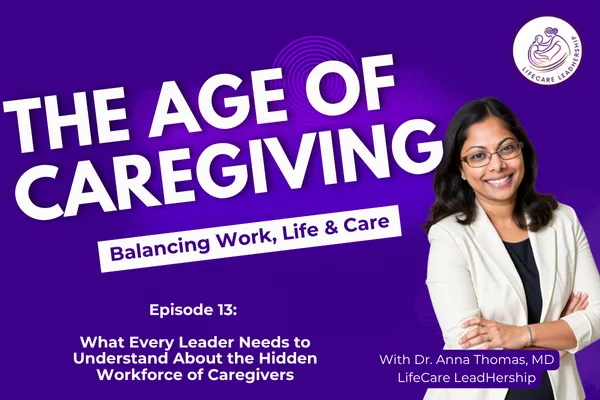
What Every Leader Needs to Understand About the Hidden Workforce of Caregivers
What if half your workforce had a second job—and never told you?
That’s not a hypothetical.
More than 53% of caregivers are also working full time. They’re managing careers while also handling medical appointments, aging parents, chronic conditions, or children with special needs.
Most never mention it.
They stay silent.
They push through.
And eventually, many burn out.
The caregiving crisis isn’t just personal.
It’s organizational.
The Hidden Workforce Keeping Your Business Afloat
Caregivers aren’t rare exceptions.
They’re embedded in every level of your organization:
A top-performing sales rep managing her mother’s dementia
A mid-level manager quietly raising a child with a disability
An executive splitting time between board meetings and chemotherapy appointments
These employees are navigating intense, high-stakes responsibilities—at home and at work.
And without support, the impact shows up through:
Missed deadlines
Increased sick days
Emotional disengagement
Unexpected resignations
The cost?
Lower productivity.
Higher turnover.
Weakened morale.
So what can leaders do to respond—without overwhelming budgets or operations?
Start with these three core insights.
1. Caregiving Is Leadership in Disguise
Caregivers are constantly managing:
Logistics
Budgets
Emotional negotiations
High-pressure decisions
Complex systems—usually without training or support
These are the very same traits sought in organizational leadership.
But here’s the challenge:
Many caregivers are afraid to speak up.
They worry they’ll be seen as unreliable or less committed.
That silence creates a double loss:
You lose trust, and you lose leadership potential.
Recognizing caregiving as leadership helps employees bring their full selves to the table—not just the parts they think are “acceptable.”
2. You Already Have the Tools—But Not the Awareness
Most organizations already offer benefits that can support caregivers:
Paid time off
Remote work flexibility
EAP programs
Wellness stipends
Mental health resources
The issue isn’t access.
It’s visibility.
If caregiving isn’t named, these benefits remain underutilized.
Build awareness by:
Creating internal messaging that explicitly names caregiving as part of life
Adding a recurring message to team meetings or HR updates: “If you’re caring for someone at home, here’s how we can support you”
Training managers to recognize and respond to caregiving needs with empathy and strategy
You don’t need new policies.
You need alignment between leadership, language, and lived experience.
3. Culture Doesn’t Shift Until Leadership Names It
If caregiving is never mentioned, employees assume it’s not welcome.
That leads to:
Isolation
Shame
Quiet resignation
But when leaders speak openly—even briefly—it changes everything.
One example:
A COO began caring for his father but stayed silent at first. When he finally shared his story with his team, something powerful happened.
He discovered 20% of his staff were also caregivers.
They were overwhelmed and struggling quietly.
That single conversation led to:
Clearer expectations
Workload adjustments
Increased engagement
A stronger, more loyal team
It didn’t take a huge budget.
It just took honesty—and leadership.
Ready to Lead Differently?
If you’re in HR, management, or executive leadership, there are clear steps you can take:
Organizational Caregiver Culture Assessment (OCCA)
Understand how caregiving is impacting your team and identify next steps.https://lifecareleadhership.com/corporate-solutionsWorkshop: Why Leaders Must CARE
Give your leadership team the training they need to support caregivers without sacrificing performance.Book: Balancing Care While Working
Share practical tools and strategies with your employees who are juggling both roles. https://lifecareleadhership.com/balancingcarebook
More resources are available at LifeCareLeadHership.com.
Final Word
Caregivers are not a burden.
They are not a liability.
They are already leaders—doing high-level work under enormous personal pressure.
What they need from you is not permission.
It’s acknowledgment.
Clarity.
And a culture that says: You belong here.
When you lead caregivers well, you don’t just retain your best people.
You invest in the future of your organization.
You’ve got this.
And I’ve got you.
The views and opinions expressed in this post are solely my own and do not reflect the views of any past or present employer of Dr. Thomas. This content is for educational and informational purposes only and is not intended as medical or legal advice.
